Posted by Richard Rothstein on February 11th, 2007
Reflections inspire much of my work, both in my photography and in my writing. I’m much more intrigued by the subject’s reflection than I am by the subject itself.
![Midtown Manhattan]()
Mirrors
My maternal grandmother Luba Abramanova (made Lilly on 1922 Ellis Island) maintained an uncomfortable truce with mirrors and cameras, anything that would reflect her image. Mirrors served an occasionally necessary function and were to be barely tolerated. Shop windows and reflecting pools were easily avoided. Cameras were–in her estimation–nothing more than mirrors that rudely captured a permanent record of the reflection. We’ve all heard stories about primitive tribes and their superstitious notion that cameras can steal the soul. And then of course we have legends of vampires and their inability to even cast a reflection. Jews have no depictions of humans in their art for fear of violating the Ten Commandment’s prohibition against “idolatry”. Narcissus couldn’t free his own gaze from the reflection in the pool and now he lives in flower pots. Medusa, rendered powerless by her own reflection, was easily slain by Perseus. The mirror defeated the Gorgon. Lilly was clearly on to something important.
Other than the customary bathroom cabinet mirror, the only other mirror in Lilly’s home was a huge Venetian smoked glass decorative mirror hanging over her living room couch at an angle rather than flat against the wall. The mirror was unapproachable. Tilting off the wall as it did, it seemed an odd position for such a big and ominous slab of glass and as a child I often wondered when it would come crashing down on the sofa and some foolish shortsighted victim. For that reason, I never sat on the sofa. If all the chairs were taken at a family gathering, I would sit on the floor pretending to be an Indian. Adults would buy that and think it cute.
Occasionally someone would comment on the Venetian mirror’s limited decorative role. Why not hang a painting instead? Between the odd angle, the couch that kept you at a distance from the mirror and the muted lighting in the living room, you really couldn’t see your own reflection in any practical sense. It wasn’t until I was 16 that I realized that the mirror was deliberately angled in that manner so that Lilly could see the dress she was wearing, but not her own face. She had hung the mirror according to her own height so that her reflection was effectively cut off at the head. more… »
Posted by Angela Ferreira on February 11th, 2007
Are quick drawings and paintings artworks or just studies? Are they value at all?
A lot of drawings of old masters have an immense value nowadays but looking at contemporary artists drawings, are they such important?
Why don’t contemporary artists exhibit mostly their drawings and experiments, just their final masterpieces?

Scrying – pencil and chalk, quick drawing on paper

Drawing from imagination, pencil on paper

Spiritual, Mixed media on paper
Posted by Hanneke van Oosterhout on February 10th, 2007
Posted by Karl Zipser
Hanneke can’t post today, so I am going to post about her work instead. Here is a detail from a painting. Can you guess what this is?
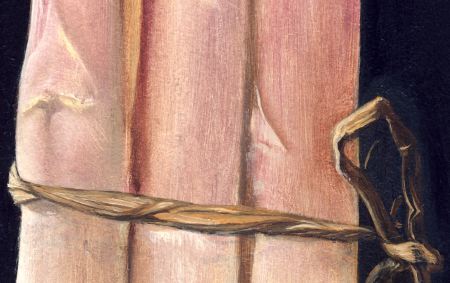
Hanneke has diverse talents. She makes both still life paintings and paintings like this one. The question is, what should Hanneke focus on? It’s a question we discuss from time to time. Hanneke paints still life because she loves still life. Ironically, still life, which in some ways is marketable, may be standing in the way of her making art that could get her more recognition. Should Hanneke paint “challenging art“, artworks speaking to terrorism, racism and other -isms of our time? Or is humble still life the real challenging art of our time, something which no serious avant-guard collector or dealer would dare to exhibit?
I’d be curious to hear what you think. Terrorism and social ills are not really Hanneke’s thing, but perhaps she should be practical and make less acceptable paintings. What do you say?
And don’t forget to look at the rest of this image… more… »
Posted by Birgit Zipser on February 9th, 2007
David’s Self-Portrait with Raven reminded me of this picture of a black bird that I carried in my mind: 
more… »
Posted by Sunil Gangadharan on February 8th, 2007
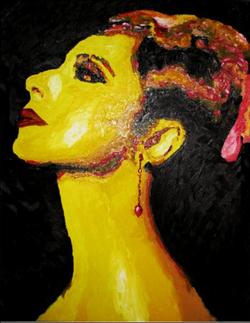
I ran into Art & Perception quite by accident – when I was doing one of those interminable searches that we are accustomed to doing on the internet for all things ‘art’, I remember skimming through some of the contents and I slowly found myself thinking that this was a bit different from other artist-group-hangouts that I had seen. Most would either fall into a category where a bunch of art students would get together to discuss class projects or the others were those that really did not stimulate thinking or original flow of ideas. I knew that I had found a group with tendencies to originality in Art and Perception and decided to keep up with the posts and little by little started commenting on the posts. I was very surprised and happy when Karl wrote to me the other day and asked if I would like to become a contributor to this site and asked me to write a guest post. I mulled for a coupe of days on how best I present myself and thought that the best way to get this going was to talk a bit about myself and a bit about questions that have been plaguing me with respect to art. This way it will serve both as an introduction and as a post that will serve to fuel further discussion (which is the objective of this group – right?)
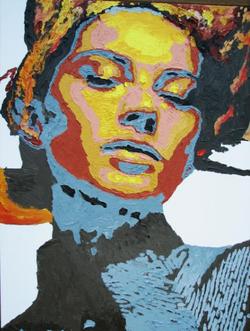
First and foremost, I am not really one of those ‘trained’ artists. I have a background in Mechanical Engineering and have been working for the last fourteen years (a good 4 years at the Indian Space Agency and most recently about 8 years on Wall Street). I spent about two years in between getting a Masters in Mechanics. Even though I did not get a chance to express myself as much as I do now, I had a lurking genie in me that always wanted to experiment. I experimented with poetry, writing, drawing, cooking and even marathon running. I found out that I was fairly good at some and used to suck at some of the others. I even remember resigning from my job with the Indian Space Agency and devoting myself to the ‘arts’ but could not really manage the monthly bread effectively. In fact at one point I even decided that I will throw it all away, join med school, become a doctor and go away and work for doctors without borders.
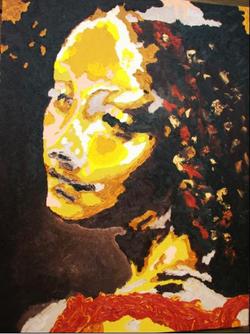
Sensible advice prevailed (from my family – primarily my wife)… The one avocation that stayed consistently with me through the years was my love for painting. This was pure joy as in the kind that you experience when you are with your son or daughter and do things sincerely even if you do not expect anything in return because your heart tells you to just do it. It seems right from the point of view of virtue, truth and beauty.So much for the high road and myself, but I think that it is precisely these qualities that seem to be divorced from the current art establishment. Discussion setups like Art and Perception seem like a good mature place to exchange a round of ‘straight from the heart’ delivery that seem to be missing from today’s politically correct world.
That said, the issues that seem to be nagging me are as follows:
- Why are art schools in the United States so devoted to churning out people (read artists and I have a vision of the video from Wall (Pink Floyd) that has children rolling off the meat grinder) that are focused towards how best they present their work at major galleries and how best to please and amuse collectors and curators when schools should really be looking to foster the creativity of the individual involved? Why are we trying to get sensibilities that are more at home in an MBA program into art schools?
- It looks like money (read hedge fund managers) is the new art critic. Are all of us collectively turning stupid in the sense that we sometimes (blindly) follow/collect worthless styles/pieces of art because that is where the money is headed? Why do we display a pack rat mentality when it comes to appraising the value of art and an artist by extension?
- Why is banal art on the rise? Why do we see instances where artists (and some fairly famous ones) give opaque descriptions that seem to be craftily tuned towards appeasing the ears and the sensitivities of the art establishment and try and explain that the significance behind a couple of squiggles on canvas is life in all its forms when it really looks a muddy footed poodle accidentally walked across it?
- Do you think that a movement can grow from the grassroots in the United States that restores art to what it really should be – ‘art for arts sake’ or is this too lofty a goal to think about especially in this industrially advanced age where today’s fads in one part of the world may already be obsolete yesterday in another part?
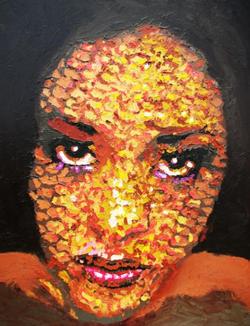
Here was a forum where I could ask questions like this and people would take some of these issues seriously or give it the attention that it merits – but nevertheless answer from their hearts.I also think that this might be a suitable forum where I can get to show some of my artworks to an audience that I seem to like and respect. So here goes. I am including four paintings that I have done over the last year in this post and I will continue to post as and when I feel the issues burn and well inside of me or when I turn out newer works. None of these paintings are for sale and I do it primarily because it brings me peace. My wife and my two year old son also enjoys some of my paintings though not necessarily my opinions…
Posted by Arthur Whitman on February 7th, 2007
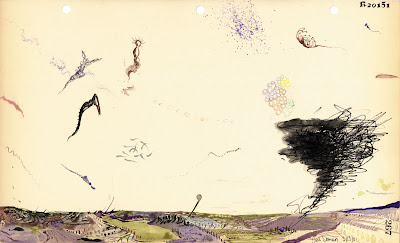
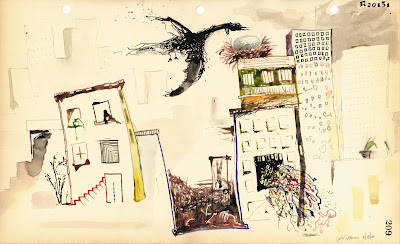
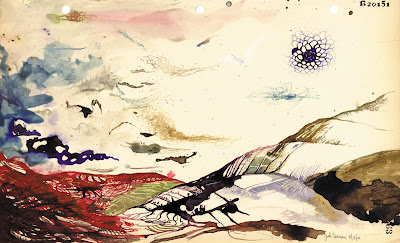
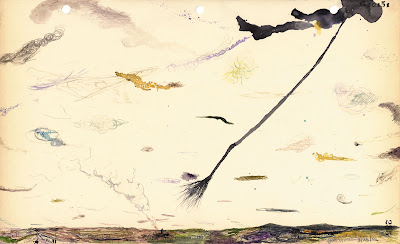
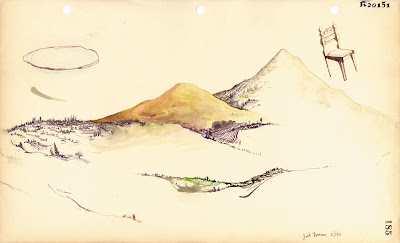
I first came upon Dorman’s work in a show at New York’s CUE Foundation and was thrilled. More work and information here.
Posted by Steve Durbin on February 6th, 2007

I always find it interesting to see how different artists treat the same subject. Browsing the web, I’ve come across a number of images from several photographers that are close to some of mine in subject matter. Not only that, but they appear close in spirit as well. That evokes two reactions in me: disappointment that I’m not the first and only one to see the world in this unique and compelling way, and pleasure in finding others who seem to see the world in this unique and compelling way.
These are photographers I can learn from. Not only because I enjoy and respect their larger bodies of work, but because by comparing similar images I think I can learn more about my own work. I want to understand what distinguishes my own vision or style, which is not something I derive from principles, but have to discover by making images and looking at them.
more… »














